#professor keting
Text
Girls when their favorite latin and philosophy teacher moves to another city and they’re on the verge of crying and a full mental brake down, I’m girls

He literally looks like he came out of Dead Poets Society, who the fuck will have intense conversations about books and poetry with me now
#dead poetry#I’m so in love with him even tho he’s twice my age#dead poets society#latin language#philosophy#professor keting
19 notes
·
View notes
Text
women artists that you should know about!!
-Judith Leyster (Dutch, 1609-1660)
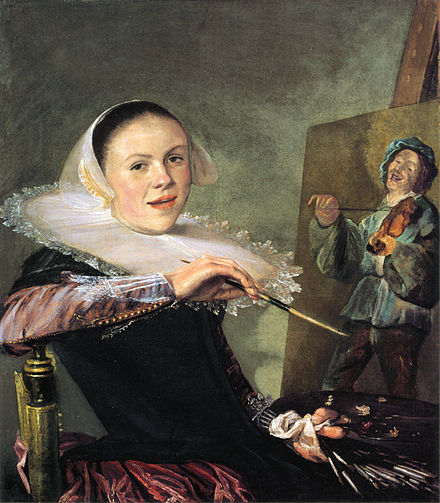
During her life her works were highly recognized, but she got forgotten after her death and rediscovered in the 19th century. In her paintings could be identified the acronym "JL", asually followed by a star, she was the first woman to be inserted in the Guild of St. Luke, the guild Haarlem's artists.
-Artemisia Gentileschi (Italian, 1593-1656)
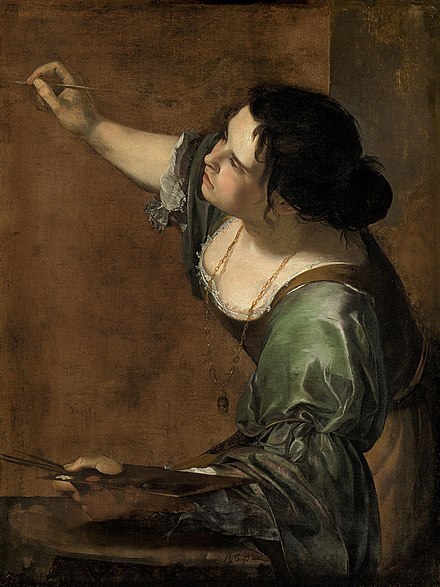
"... Si è talmente appraticata che posso osar de dire che hoggi non ci sia pare a lei, havendo fatto opere che forse i principali maestri di questa professione non arrivano al suo sapere". This is how the father Orazio talked about his nineteen year old daughter to the Medici's court in Florence.
In 1611, Artemisia got raped, and she had to Undergo a humiliating trial, just to marry so that she could "Restore one's reputation" , according to the morality of the time. Only after a few years Artemisia managed to regain her value, in Florence, in Rome, in Naples and even in England, her oldest surviving work is "Susanna and the elders".
-Elisabeth Louise Vigèe Le Brun (French, 1755-1842)
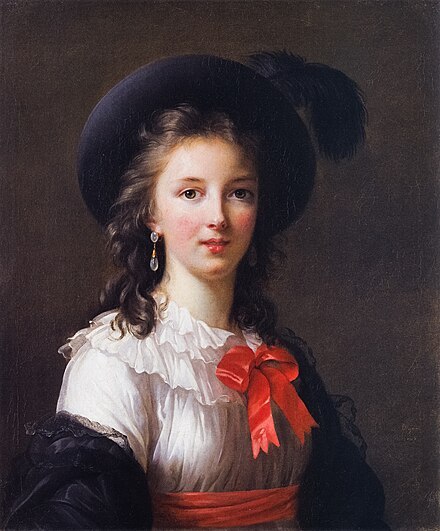
She was a potrait artists who created herself a name during the Ancien Règime, serving as the potrait painting of the Queen of France Marie Antoinette, she painted 600 portraits and 200 landscapes in the course of her life.
-Augusta Savage (Afro-American, 1892-1962)
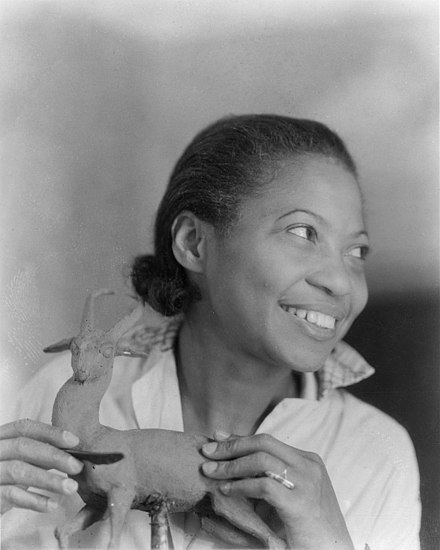
Augusta started making figures when she was a child, which most of them were small animals made out of red clay of her hometown, she kept model claying, and during 1919, at the Palm Beach County Fair, she won $25 prize and ribbon for most original exhibit. After completing her studies, Savage worked in Manhattan steam laundries to support her family along with herself. After a violent stalking made by Joe Gould that lasted for two decades, the stalker died in 1957 after getting lobotomized. In 2004, a public high school, Augusta Fells Savage Institute of Visual Arts, in Baltimore, opened.
-Marie Ellenrieder (German,1791-1863)
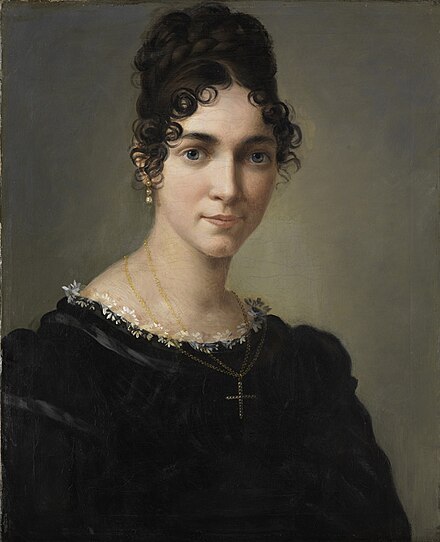
She was known for her portraits and religious paintings. During a two years long stay in Rome, she met some Nazarenes (group of early 19th century German romantic painters who wanted to revive spirituality in art),after becoming a student of Friedrich Overbeck and after being heavily influenced by a friend, she began painting religious image, getting heavily inspired by the Italian renaissance, more specifically by the artist Raphael. In 1829, she became a court painter to Grand Duchess Sophie of Baden.
-Berthe Marie Pauline Morisot (French,1841-1893)
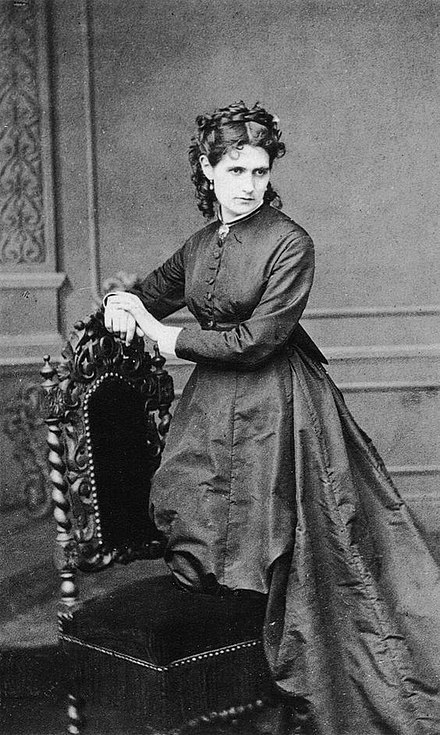
Morisot studied at the Louvre, where she met Edouard Manet, which became her friend and professor. During 1874 she participated at her first Impressionist exhibition, and in 1892 sets up her own solo exhibition.
-Edmonia Lewis or also called "wildfire" (mixed African-American and Native American 1844-1907)
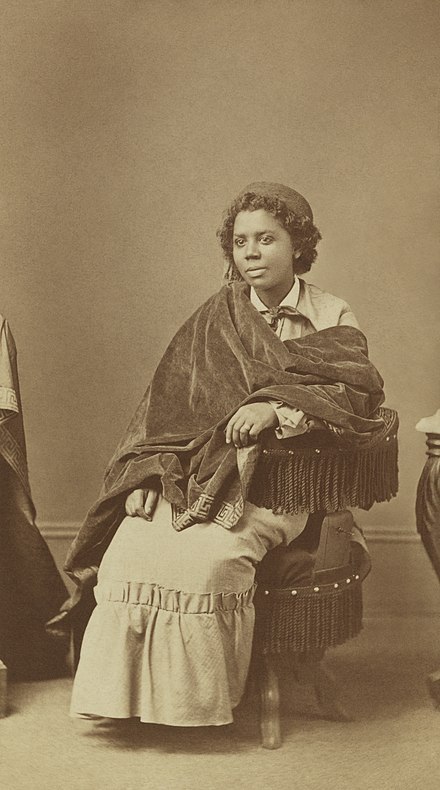
Edmonia was born in Upstate New York but she worked for most of her career in Rome, Italy. She was the first ever African American and Native American sculptor to achieve national and international fame, she began to gain prominence in the USA during the Civil Ware. She was the first black woman artist who has participated and has been recognized to any extent by the American artistic mainstream. She Also in on Molefi Kete Asante's list of 100 Greatest African Americans.
-Marie Gulliemine Benoist (French, 1768-1826)
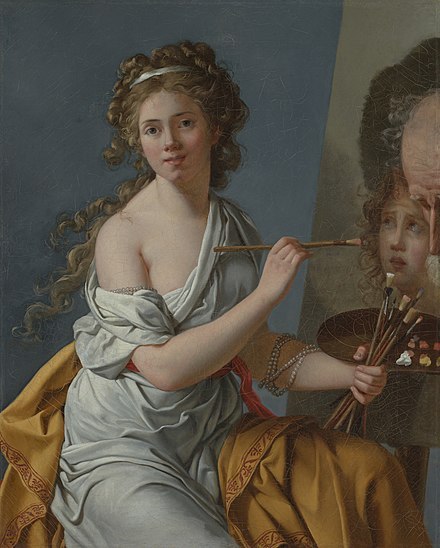
Daughter of a civil servant, Marie was A pupil of Jaques-Louis David, whose she shared the revolutionary ideas with, painting innovative works that have caused whose revolutionary ideals he shared, painting innovative works that caused discussion. She opened a school for young girl artists, but the marriage with the banker Benoist and the political career Of the husband had slowly had effect on her artistic career, forcing her to stop painting. Her most famous work is Potrait of Madeline, which six years before slavery was abolished, so that painting became a simbol for women's emancipation and black people's rights.
-Lavinia Fontana (Italian, 1552-1614)

She is remembered for being the first woman artist to paint an altarpiece and for painting the first female nude by a woman (Minerva in the act of dressing), commissioned by Scipione Borghese.
-Elisabetta Sirani. (Italian, 1698-1665)
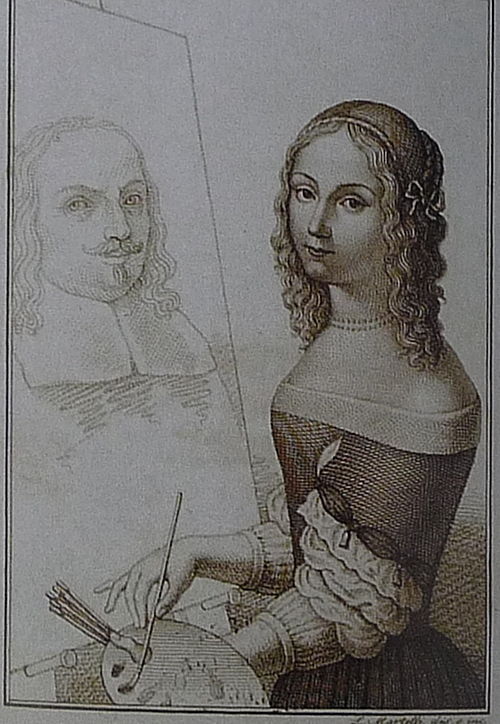
Her admirable artistic skills, that would vary from painting, drawing and engraving, permitted her, in 1660, to enter in the National Academy of S. Luca, making her work as s professor. After two years she replaced her father in his work of his Artistic workshop, turning it into an art schools for girls, becoming the first woman in Europe to have a girls' school of painting, like Artemisia Gentileschi, she represent female characters as strong and proud, mainly drawn from Greek and Roman stories. (ex. Timoclea Kills The Captain of Alexander the Great, 1659).
#judith leyster#artemisia gentileschi#Elisabeth Louise Vigèe Le Brun#Augusta Savage#Marie Ellenrieder#berthe morisot#Edmonia Lewis#Marie Gulliemine Benoist#Lavinia Fontana#Elisabetta Sirani#women artists#renaissance#baroque#art#women in art#artist women#feminism#women history#radical feminists do touch#radical feminists please interact#history#terfblr#terfsafe#cultura#culture
1K notes
·
View notes
Text


This book attempts to distill from many wonderful possibilities the 100 most outstanding examples of greatness. Pioneering scholar of African American Studies Molefi Kete Asante has used four criteria in his selection: the individual's significance in the general progress of African Americans toward full equality in the American social and political system; self-sacrifice and the demonstration of risk for the collective good; unusual will and determination in the face of the greatest danger or against the most stubborn odds; and personal achievement that reveals the best qualities of the African American people. In adopting these criteria Professor Asante has sought to steer away from the usual standards of popular culture, which often elevates the most popular, the wealthiest, or the most photogenic to the cult of celebrity. The individuals in this book - examples of lasting greatness as opposed to the ephemeral glare of celebrity fame - come from four centuries of African American history.
1 note
·
View note
Text
Charles Drew

Charles Richard Drew (June 3, 1904 – April 1, 1950) was an American surgeon and medical researcher. He researched in the field of blood transfusions, developing improved techniques for blood storage, and applied his expert knowledge to developing large-scale blood banks early in World War II. This allowed medics to save thousands of lives of the Allied forces. As the most prominent African American in the field, Drew protested against the practice of racial segregation in the donation of blood, as it lacked scientific foundation, and resigned his position with the American Red Cross, which maintained the policy until 1950.
Early life and education
Drew was born in 1904 into an African-American middle-class family in Washington, D.C. His father, Richard, was a carpet layer and his mother, Nora Burrell, trained as a teacher. Drew and three of his four younger siblings grew up in Washington's largely middle-class and interracial Foggy Bottom neighborhood. From 1920 until his marriage in 1939, Drew's permanent address was in Arlington County, Virginia, although he graduated from Washington's Dunbar High School in 1922 and usually resided elsewhere during that period of time.
Drew won an athletics scholarship to Amherst College in Massachusetts, from which he graduated in 1926. An outstanding athlete at Amherst, Drew also joined Omega Psi Phi fraternity as an off-campus member; Amherst fraternities did not admit blacks at that time. After college, Drew spent two years (1926–1928) as a professor of chemistry and biology, the first athletic director, and football coach at the historically black private Morgan College in Baltimore, Maryland, to earn the money to pay for medical school.
Drew attended medical school at McGill University in Montreal, Quebec, Canada, where he achieved membership in Alpha Omega Alpha, a scholastic honor society for medical students, ranked second in his graduating class of 127 students, and received the standard Doctor of Medicine and Master of Surgery degree awarded by the McGill University Faculty of Medicine in 1933.
Drew's first appointment as a faculty instructor was for pathology at Howard University from 1935 to 1936. He then joined Freedman's Hospital, a federally operated facility associated with Howard University, as an instructor in surgery and an assistant surgeon. In 1938, Drew began graduate work at Columbia University in New York City on the award of a two-year Rockefeller fellowship in surgery. He then began postgraduate work, earning his Doctor of Science in Surgery at Columbia University. He spent time doing research at Columbia's Presbyterian Hospital and gave a doctoral thesis, "Banked Blood," based on an exhaustive study of blood preservation techniques. He earned a Doctor of Science in Medicine degree in 1940, becoming the first African American to do so.
Blood for Britain
In late 1940, before the U.S. entered World War II and just after earning his doctorate, Drew was recruited by John Scudder to help set up and administer an early prototype program for blood storage and preservation. He was to collect, test, and transport large quantities of blood plasma for distribution in the United Kingdom. Drew went to New York City as the medical director of the United States' Blood for Britain project. The Blood for Britain project was a project to aid British soldiers and civilians by giving U.S. blood to the United Kingdom.
Drew started what would be later known as bloodmobiles, which were trucks containing refrigerators of stored blood; this allowed for greater mobility in terms of transportation as well as prospective donations.
Drew created a central location for the blood collection process where donors could go to give blood. He made sure all blood plasma was tested before it was shipped out. He ensured that only skilled personnel handled blood plasma to avoid the possibility of contamination. The Blood for Britain program operated successfully for five months, with total collections of almost 15,000 people donating blood, and with over 5,500 vials of blood plasma. As a result, the Blood Transfusion Betterment Association applauded Drew for his work.
American Red Cross Blood Bank
Out of Drew's work, he was appointed director of the first American Red Cross Blood Bank in February 1941. The blood bank being in charge of blood for use by the U.S. Army and Navy, he disagreed with the exclusion of the blood of African-Americans from plasma-supply networks. In 1942, Drew resigned from his posts after the armed forces ruled that the blood of African-Americans would be accepted but would have to be stored separately from that of whites.
Academic career
In 1941, Drew's distinction in his profession was recognized when he became the first African-American surgeon selected to serve as an examiner on the American Board of Surgery.
Drew had a lengthy research and teaching career, returning to Freedman's Hospital and Howard University as a surgeon and professor of medicine in 1942. He was awarded the Spingarn Medal by the NAACP in 1944 for his work on the British and American projects. He was given an honorary doctor of science degree, first by Virginia State College in 1945 then by Amherst in 1947.
Personal life
In 1939, Drew married Minnie Lenore Robbins, a professor of home economics at Spelman College in Atlanta, Georgia, whom he had met earlier during that year. They had three daughters and a son. His daughter Charlene Drew Jarvis served on Council of the District of Columbia from 1979 to 2000, was the president of Southeastern University from 1996 until 2009 and was a president of the District of Columbia Chamber of Commerce.
Death
Beginning in 1939, Drew traveled to Tuskegee, Alabama to attend the annual free clinic at the John A. Andrew Memorial Hospital. For the 1950 Tuskegee clinic, Drew drove along with three other black physicians. Drew was driving around 8 a.m. on April 1. Still fatigued from spending the night before in the operating theater, he lost control of the vehicle. After careening into a field, the car somersaulted three times. The three other physicians suffered minor injuries. Drew was trapped with serious wounds; his foot had become wedged beneath the brake pedal. When reached by emergency technicians, he was in shock and barely alive due to severe leg injuries.
Drew was taken to Alamance General Hospital in Burlington, North Carolina. He was pronounced dead a half hour after he first received medical attention. Drew's funeral was held on April 5, 1950, at the Nineteenth Street Baptist Church in Washington, D.C.
Despite a popular myth to the contrary, once repeated on an episode ("Dear Dad... Three") of the hit TV series M*A*S*H, Drew's death was not the result of his having been refused a blood transfusion because of his skin color. This myth spread very quickly since during his time it was very common for blacks to be refused treatment because there were not enough "Negro beds" available or the nearest hospital only serviced whites. In truth, according to one of the passengers in Drew's car, John Ford, Drew's injuries were so severe that virtually nothing could have been done to save him. Ford added that a blood transfusion might have actually killed Drew sooner.
Legacy
In 1976, the National Park Service designated the Charles Richard Drew House in Arlington County, Virginia, as a National Historic Landmark in response to a nomination by the Afro-American Bicentennial Corporation.
In 1981, the United States Postal Service issued a 35¢ postage stamp in its Great Americans series to honor Drew.
Charles Richard Drew Memorial Bridge, spanning the Edgewood and Brookland neighborhoods in Washington, D.C.
USNS Charles Drew, a dry cargo ship of the United States Navy
Parc Charles-Drew, in Le Sud-Ouest, Montreal, Quebec, Canada
In 2002, scholar Molefi Kete Asante listed Drew as one of the 100 Greatest African Americans.
Numerous schools and health-related facilities, as well as other institutions, have been named in honor of Dr. Drew.
Medical and higher education
In 1966, the Charles R. Drew Postgraduate Medical School was incorporated in California and was named in his honor. This later became the Charles R. Drew University of Medicine and Science.
Charles Drew Health Center, Omaha, Nebraska
Charles Drew Science Enrichment Laboratory, Michigan State University, East Lansing, Michigan
Charles Drew Health Foundation, East Palo Alto, California, 1960s-2000, was the community's only clinic for decades.
Charles Drew Community Health Center, located in Burlington, NC near the site of the old Alamance County hospital.
Charles Drew Pre-Health Society, University of Rochester
Charles R Drew Wellness Center in Columbia, South Carolina
Charles R. Drew Hall, an all-male freshman dorm at Howard University, Washington D.C.
Charles Drew Memorial Cultural House, residence at Amherst College, his alma mater
Charles Drew Premedical Society at Columbia University, New York
K-12 schools
Charles R. Drew Middle School & Magnet school for the gifted, opened 1966 Los Angeles Unified School District https://drew-lausd-ca.schoolloop.com/
Charles R. Drew Middle School Lincoln Alabama operated by Talladega County Schools
Charles R. Drew Junior High School, Detroit, Michigan
Dr. Charles R. Drew Science Magnet School, Buffalo, NY
Charles R. Drew Elementary School, Miami Beach and Pompano Beach, Florida
Bluford Drew Jemison S.T.E.M Academy, Baltimore (closed in 2013)
Bluford Drew Jemison STEM Academy West, a Middle/High School in Baltimore, Maryland
Dr. Charles R. Drew Elementary School, Colesville, Maryland
Charles Drew Elementary School, Washington, DC
Charles R. Drew Elementary School, Arlington, Virginia
Dr. Charles Drew Elementary School, New Orleans, LA
Charles R. Drew Charter School opened in August 2000 as the first charter school in Atlanta, Georgia. This is the setting for the 2015 Movie Project Almanac.
Dr. Charles Drew Academy, Ecorse, MI
Charles R. Drew Intermediate School, Crosby, Texas
Dr. Charles Drew Elementary School, San Francisco, Ca.
Charles Richard Drew Intermediate School / Charles Richard Drew Educational Campus, Bronx, New York
7 notes
·
View notes
Text
John Henrik Clarke

Remembering John Henrik Clarke.
https://www.wikiwand.com/en/John_Henrik_Clarke
Dr. John Henrik Clarke (born John Henry Clark, January 1, 1915 – July 12, 1998), was a Pan-Africanist writer, historian, professor, and a pioneer in the creation of Africana studies and professional institutions in academia starting in the late 1960s.
Early life and education
He was born John Henry Clark on January 1, 1915, in Union Springs, Alabama, the youngest child of sharecroppers John (Doctor) and Willie Ella (Mays) Clark (who died in 1922). With the hopes of earning enough money to buy land rather than sharecrop, his family moved to the closest milltown, Columbus, Georgia.
Counter to his mother's wishes for him to become a farmer, Clarke left Georgia in 1933 by freight train and went to Harlem, New York as part of the Great Migration of rural blacks out of the South to northern cities. There he pursued scholarship and activism. He renamed himself as John Henrik (after rebel Norwegian playwright Henrik Ibsen) and added an "e" to his surname, spelling it as "Clarke."
Positions in academia
Clarke was a professor of Black and Puerto Rican Studies at Hunter College of the City University of New York from 1969 to 1986, where he served as founding chairman of the department. He also was the Carter G. Woodson Distinguished Visiting Professor of African History at Cornell University’s Africana Studies and Research Center. Additionally, in 1968 he founded the African Heritage Studies Association and the Black Caucus of the African Studies Association.
In its obituary of Clarke, The New York Times noted that the activist's ascension to professor emeritus at Hunter College was "unusual... without benefit of a high school diploma, let alone a Ph.D." It acknowledged that "nobody said Professor Clarke wasn't an academic original." In 1994, Clarke earned a doctorate from the non-accredited Pacific Western University (now California Miramar University) in Los Angeles, having earned a bachelor's degree there in 1992.
Career
By the 1920s, the Great Migration and demographic changes had led to a concentration of African Americans living in Harlem. A synergy developed among the artists, writers and musicians and many figured in the Harlem Renaissance. They began to develop supporting structures of study groups and informal workshops to develop newcomers and young people.
Arriving in Harlem at the age of 18 in 1933, Clarke developed as a writer and lecturer during the Great Depression years. He joined study circles such as the Harlem History Club and the Harlem Writers' Workshop. He studied intermittently at New York University, Columbia University, Hunter College, the New School of Social Research and the League for Professional Writers. He was an autodidact whose mentors included the scholar Arturo Alfonso Schomburg. From 1941 to 1945, Clarke served as a non-commissioned officer in the United States Army Air Forces, ultimately attaining the rank of master sergeant.
In the post-World War II era, there was new artistic development, with small presses and magazines being founded and surviving for brief times. Writers and publishers continued to start new enterprises: Clarke was co-founder of the Harlem Quarterly (1949–51), book review editor of the Negro History Bulletin (1948–52), associate editor of the magazine, Freedomways, and a feature writer for the black-owned Pittsburgh Courier.
Clarke taught at the New School for Social Research from 1956 to 1958. Traveling in West Africa in 1958–59, he met Kwame Nkrumah, whom he had mentored as a student in the US, and was offered a job working as a journalist for the Ghana Evening News. He also lectured at the University of Ghana and elsewhere in Africa, including in Nigeria at the University of Ibadan.
Becoming prominent during the Black Power movement in the 1960s, which began to advocate a kind of black nationalism, Clarke advocated for studies of the African-American experience and the place of Africans in world history. He challenged the views of academic historians and helped shift the way African history was studied and taught. Clarke was "a scholar devoted to redressing what he saw as a systematic and racist suppression and distortion of African history by traditional scholars." He accused his detractors of having Eurocentric views. His writing included six scholarly books and many scholarly articles. He also edited anthologies of writing by African Americans, as well as collections of his own short stories. In addition, Clarke published general interest articles. In one especially heated controversy, he edited and contributed to an anthology of essays by African Americans attacking the white writer William Styron and his novel, The Confessions of Nat Turner, for his fictional portrayal of the African-American slave known for leading a rebellion in Virginia.
Besides teaching at Hunter College and Cornell University, Clarke founded professional associations to support the study of black culture. He was a founder with Leonard Jeffries and first president of the African Heritage Studies Association, which supported scholars in areas of history, culture, literature and the arts. He was a founding member of other organizations to support work in black culture: the Black Academy of Arts and Letters and the African-American Scholars' Council.
Personal life
Clarke's first marriage was to the mother of his daughter Lillie (who died before her father). They divorced.
In 1961, Clarke married Eugenia Evans in New York, and together they had a son and daughter: Nzingha Marie and Sonni Kojo. The marriage ended in divorce.
In 1997, John Henrik Clarke married his longtime companion, Sybil Williams. He died of a heart attack on July 12, 1998, at St. Luke's-Roosevelt Hospital Center. He was buried in Green Acres Cemetery, Columbus, Georgia.
Legacy and honors
* 1985 – Faculty of the Africana Studies and Research Center at Cornell University named the John Henrik Clarke Library after him.
* 1995 – Carter G. Woodson Medallion, Association for the Study of Afro-American Life and History.
* 2002 – Molefi Kete Asante listed Dr. John Henrik Clarke as one of his 100 Greatest African Americans.
* 2011 – Immortal Technique includes a short speech by Dr. Clarke on his album The Martyr. It is Track 13, which is entitled "The Conquerors".
5 notes
·
View notes
Photo

RT @DignityinSchool: SAVE THE DATE: Jan 15 @ 6 PM EST we will host our 1st culturally relevant curriculum webinar of 2018 facilitated by highly esteemed professor and author Dr. Molefi Kete Asante REGISTER: https://t.co/W0eHbw41oz @RacialJsticeNow @justschools https://t.co/4q65EjgT2T
1 note
·
View note
Text
XVII Jornada de Sistemas de Informação
O curso de Sistemas de Informação da UNI7 promove XVII Jornada de Sistemas de Informação.
Quando? de 01 a 03 de junho, no horário da noite.
O evento ocorrerá online no Teams, dentro da equipe Na Real. Alunos da UNI7 podem ingressar na equipe com o código: no67l7y.
Confira a programação abaixo.
01/06
Apresentação dos Games
(19h às 21h)
Canal Festival de Software – Estágio 1
Apresentação dos Sistemas Web
(19h às 21h)
Canal Festival de Software – Estágio 2
Apresentação dos Apps
(19h às 21h)
Canal Festival de Software – Estágio 3
02/06
A vida sem chefes: equipes de desenvolvimento autogerenciadas
Ciro Coelho (professor UNI7/Portugal)
(19h às 19h40)
Canal Auditório
Sistemas Adaptativos
Eduardo Mendes (ex-professor UNI7/Canadá))
(19h40 às 20h20)
Canal Auditório
Hacking technical Interview – Como se preparar para uma entrevista técnica no exterior
André Bessa (professor UNI7/Canadá)
(20h20 às 21h)
Canal Auditório
03/06
O Papel da Ciência de Dados no Combate à COVID-19
Ramsés Oliveira e Nauber Gois (Secretaria da Saúde do Estado do Ceará-SESA)
(18h às 18h40)
Canal Auditório
Inovando na Oceania com um app de e-commerce
Adriano Nepomuceno (ex-aluno UNI7/Luk Technologies-Nova Zelândia)
(19h às 19h40)
Canal Auditório
Mercado de Trabalho nos EUA: Desafios e Oportunidades
Arthur Accioly (ex-aluno UNI7/Barclays-NY-EUA)
(19h40 às 20h20)
Canal Auditório
Modern Agile no Nubank e o futuro do desenvolvimento de software
Kete Rufino (ex-aluna UNI7/Nubank-SP)
(20h20 às 21h)
Canal Auditório
XVII Jornada de Sistemas de Informação publicado primeiro em https://www.uni7.edu.br/
from Dicas da Laura https://ift.tt/3eAB4cX
0 notes
Text
Adviescommissie buigt zich over krimp in vo - Algemene Vereniging Schoolleiders
Adviescommissie buigt zich over krimp in vo
Algemene Vereniging Schoolleiders
Naast Elbert Dijkgraaf, voormalig Tweede Kamerlid voor de SGP en professor aan de Erasmus Universiteit, buigen Kete Kervezee, voormalig voorzitter van de PO-Raad en Inspecteur-Generaal van het onderwijs en lid van de Taskforce Zeeuws-Vlaanderen, ...
en meer »
from taskforce - Google Nieuws https://ift.tt/2OCoLnj
0 notes
Photo

August 1, 1894 – Benjamin Elijah Mays was a Black United States minister, educator, scholar, social activist and the president of Morehouse College in Atlanta, Georgia from 1940 to 1967 was born in Ninety Six, SC, on this date in 1894. Mays was also a significant mentor to civil rights leader Martin Luther King Jr. and was among the most articulate and outspoken critics of segregation before the rise of the modern civil rights movement in the United States. In 1926, he was appointed executive secretary of the Tampa, Florida Urban League. After two years at this post he became National Student Secretary of the YMCA. Mays accepted the position of dean of the School of Religion at Howard University in Washington, D.C. in 1934. During his six years as dean, Mays traveled to India, where, at the urging of Howard Thurman, a fellow professor at Howard, he spoke at some length with Mahatma Gandhi. In 1940, Mays became the president of Morehouse College. His most famous student there was Martin Luther King Jr. The two developed a close relationship that continued until King's death in 1968; As his lifelong mentor, Mays delivered the eulogy for King. After his retirement in 1967 from Morehouse, Mays was elected president of the Atlanta Public Schools Board of Education, where he supervised the peaceful desegregation of Atlanta's public schools. He published two autobiographies, Born to Rebel (1971), and Lord, the People Have Driven Me On (1981). In 1982, he was awarded the Spingarn Medal from the NAACP. Mays was a member of the Omega Psi Phi Fraternity. In 2002, scholar Molefi Kete Asante listed Benjamin Mays on his list of 100 Greatest African Americans. The Mays family has initiated a petition to honor Dr. Mays’ legacy through a nomination for the high honor of the Presidential Medal of Freedom. HAPPY BIRTHDAY BENJAMIN MAYS!!!!!!!!!!! {R.I.P}
0 notes
Link
This interview from Professor Molefi Kete Asante discussed about racist issue and its relation to Afrocentricity. He mentioned several essential points of the importance of Afrocentricity which related to our discussion in class. First of all, Afrocentricity is of great importance to the continuous resistance against all different kinds of racism in the world. Second, everything that mentioned African people should be based on the narratives of African people themselves. Third, counter with eurocentricity, Afrocentricity emphasizes all other races irreplaceable contribution to the development of human civilization in the past, nowadays, and future rather than credit those great contributions to only one race.
0 notes
Text
Charles H. Houston






Charles Hamilton Houston (September 3, 1895 – April 22, 1950) was a prominent African-American lawyer, Dean of Howard University Law School, and NAACP Litigation Director who played a significant role in dismantling the Jim Crow laws, which earned him the title "The Man Who Killed Jim Crow". He is also well known for having trained future Supreme Court Justice Thurgood Marshall.
Biography
Early years
Houston was born in Washington, D.C. His father worked as a lawyer. Houston started at Amherst College in 1911, was elected to the Phi Beta Kappa honor society, and graduated as valedictorian in 1915. He returned to D.C. to teach at Howard University. As the U.S. entered World War I, he joined the then racially segregated U.S. Army as an officer and was sent to France. He returned to the U.S. in 1919, and began attending Harvard Law School. He was a member of the Harvard Law Review and graduated cum laude. Houston was also a member of Alpha Phi Alpha fraternity. He received his JD from Harvard in 1923 and that same year was awarded a Sheldon Traveling Fellowship to study at the University of Madrid. He was admitted to the Washington, DC bar in 1924.
In 1924 he married Gladys Moran. They divorced in 1937 and he remarried Henrietta Williams. They had Houston's only child in 1940, Charles Hamilton Houston, Jr.
Career
Houston served as Vice-Dean and Dean of the Howard University School of Law from 1929-35. In this capacity he had direct influence on nearly one-quarter of all the black lawyers in the United States, including former student Thurgood Marshall. While at Howard, Houston oversaw the law school's accreditation by the Association of American Law Schools and the American Bar Association. Houston left Howard in 1935 and served as special counsel for the National Association for the Advancement of Colored People (NAACP) until 1940. In this capacity he argued several important civil rights cases before the U.S. Supreme Court. Through his work at the NAACP, Houston played a role in nearly every civil rights case before the Supreme Court between 1930 and Brown v. Board of Education (1954). Houston's plan to attack and defeat Jim Crow segregation by demonstrating the inequality in the "separate but equal" doctrine from the Supreme Court's Plessy v. Ferguson decision as it pertained to public education in the United States was the masterstroke that brought about the landmark Brown decision. In Missouri ex rel. Gaines v. Canada (1939), Houston argued that it was unconstitutional for Missouri to exclude blacks from the state’s university law school when, under the “separate but equal” provision, no comparable facility for blacks existed within the state.
Houston founded a law firm with Wendell P. Gardner, Sr. that later included, as name partners, William B. Bryant, Emmet G. Sullivan, and Joseph C. Waddy. The firm was prestigious but their work not well-compensated. Ten members of the firm would go on to become judges, including Theodore Newman and the son of Wendell Gardner.
Houston’s efforts to dismantle the legal theory of “separate but equal” came to fruition after his death in 1950 with the historic Brown v. Board of Education (1954) decision, which prohibited segregation in public schools. In the documentary "The Road to Brown", Hon. Juanita Kidd Stout described Houston's strategy, "When he attacked the "separate but equal" theory his real thought behind it was that "All right, if you want it separate but equal, I will make it so expensive for it to be separate that you will have to abandon your separateness." And so that was the reason he started demanding equalization of salaries for teachers, equal facilities in the schools and all of that." Houston took a movie camera across South Carolina to document the inequalities between African-American and white education. Then, as Special Counsel to the NAACP Houston dispatched Thurgood Marshall, Oliver Hill and other young attorneys to work to equalize teachers' salaries. Houston led a team of African-American attorneys who used similar tactics to bring to an end the exclusion of African-Americans from juries across the South.
Death and legacy
Houston died from a heart attack on April 22, 1950, at the age of 54. He was posthumously awarded the NAACP's Spingarn Medal in 1950. In 1958, the main building of the Howard University School of Law was dedicated as Charles Hamilton Houston Hall. His significance became more broadly known through the success of Thurgood Marshall and after the 1983 publication of Genna Rae McNeil's Groundwork: Charles Hamilton Houston and the Struggle for Civil Rights.
Houston is the person for whom the Charles Houston Bar Association and the Charles Hamilton Houston Institute for Race and Justice at Harvard Law School—which opened in the fall of 2005—are named. In addition, there is a professorship at Harvard Law named after him; Elena Kagan, formerly the Dean of Harvard Law School and now an Associate Justice of the United States Supreme Court, was the Charles Hamilton Houston Professor of Law.
In 2002, scholar Molefi Kete Asante listed Charles Hamilton Houston on his list of 100 Greatest African Americans.
The Washington Bar Association annually awards the Charles Hamilton Houston Medallion of Merit to an individual who has advanced the cause of Houstonian jurisprudence.
Wikipedia
5 notes
·
View notes
Text
Voortgezet Onderwijs - Nationale Onderwijsgids (persbericht)
Nationale Onderwijsgids (persbericht)
Voortgezet Onderwijs
Nationale Onderwijsgids (persbericht)
Naast Elbert Dijkgraaf, voormalig Tweede Kamerlid voor de SGP en professor aan de Erasmus Universiteit, buigen Kete Kervezee, voormalig voorzitter van de PO-Raad en Inspecteur-Generaal van het onderwijs en lid van de Taskforce Zeeuws-Vlaanderen, ...
from taskforce - Google Nieuws https://ift.tt/2IE9q06
0 notes
Text
Adviescommissie buigt zich over krimp in vo - Algemene Vereniging Schoolleiders
Adviescommissie buigt zich over krimp in vo
Algemene Vereniging Schoolleiders
Naast Elbert Dijkgraaf, voormalig Tweede Kamerlid voor de SGP en professor aan de Erasmus Universiteit, buigen Kete Kervezee, voormalig voorzitter van de PO-Raad en Inspecteur-Generaal van het onderwijs en lid van de Taskforce Zeeuws-Vlaanderen, ...
en meer »
from taskforce - Google Nieuws https://ift.tt/2yca6VO
0 notes
Text
Commissie-Dijkgraaf adviseert over krimp in voortgezet onderwijs - Rijksoverheid.nl
Commissie-Dijkgraaf adviseert over krimp in voortgezet onderwijs
Rijksoverheid.nl
Naast Elbert Dijkgraaf, voormalig Tweede Kamerlid voor de SGP en professor aan de Erasmus Universiteit, buigen Kete Kervezee, voormalig voorzitter van de PO-Raad en Inspecteur-Generaal van het onderwijs en lid van de Taskforce Zeeuws-Vlaanderen, ...
en meer »
from taskforce - Google Nieuws https://ift.tt/2ycIOyh
0 notes